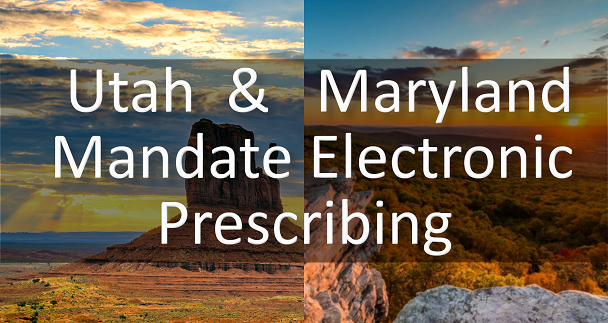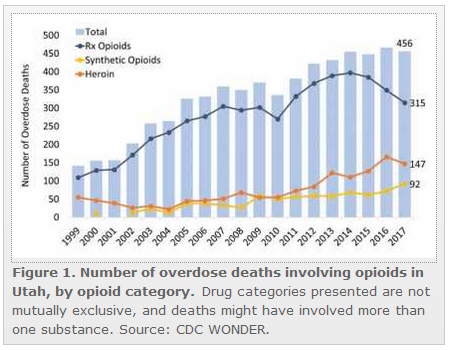
Utah Governor Gary Herbert and Maryland Governor Larry Hogan have both recently signed their State’s electronic prescribing mandates into law. Utah House Bill 177 mandates healthcare providers to electronically prescribe all controlled substance medications with an effective date of January 1st, 2022. Both Maryland Senate Bill 166 and House Bill 512 also mandate providers to electronically prescribe all controlled substances with an effective date of January 1st, 2022.
The Utah and Maryland mandates require their State’s various medical boards to establish rules and regulations for a system to temporarily waive the requirement of electronic prescribing. Maryland’s waiver will not exceed one year, and Utah’s waiver will grant up to a two-year extension for the electronic prescribing requirement. Maryland’s mandate states that the Health Occupations Board may take disciplinary action for violating the mandate, while Utah’s bill goes into specific detail about criminal charges and monetary fines for prescribers who violate the electronic prescribing mandate. The Utah mandate also goes into additional detail about licensing to manufacture, produce, and conduct research with medications.

Utah is currently above the national average for opioid-related overdose deaths, with 15.5 deaths per 100,000 people while the national average is 14.6 deaths. Prescription opioid overdose deaths continued to gradually rise until 2015, then have been on a downward trend since then.[1] Heroin and synthetic opioid deaths have continued to rise since the early 2000’s. Utah began attempting to tackle their Opioid dependence problems heavily in 2017. SB258 established guidelines for prescribing both opiates and opiate antagonists. HB146 setup guidelines for partial filling of schedule II controlled substance prescriptions.

Maryland is second only to West Virginia for having the highest opioid-related overdose deaths with 33.7 deaths per 100,000 people, more than double the national rate. Prescription opioid overdose deaths continued to gradually rise until taking a sharp turn in 2016, but have since been on a downward trend. Synthetic opioid deaths have sharply risen since 2015. [2] In 2017 Larry Hogan signed the Heroin and Opioid Prevention Effort (HOPE) and Treatment Act into law. The HOPE Act improved patient education, increased treatment services, and eventually expanded Naloxone access. The Controlled Dangerous Substances – Volume Dealers Act passed in 2018 allowed for more effective prosecution of drug traffickers in the state.
Utah is ahead of Maryland in their EPCS enablement statistics. Utah currently has a 50.6% prescriber enablement for electronic prescribing of controlled substances, slightly below the national average of 51.1% while Maryland has only 34.9% prescriber enablement. Pharmacy enablement in Utah for EPCS is 99.0%, well above the national average of 97.1% while Maryland is slightly below the national average at 96.9%.[3] MDToolbox encourages providers not to wait until the last minute to setup electronic prescribing!
Please see our website for other states that have either passed or have pending legislation that mandates electronic prescribing. MDToolbox looks forward to providing tools and resources to assist providers throughout Maryland and Utah to ease the transition and help our customers combat the opioid epidemic. With MDToolbox, providers have access to tools such as Electronic Prescribing of Controlled Substances (EPCS) and convenient on the go e-prescribing with our mobile app! We offer a free 30 day free trial, so Contact us for more information!
[1]https://www.drugabuse.gov/opioid-summaries-by-state/utah-opioid-summary
[2]https://www.drugabuse.gov/opioid-summaries-by-state/maryland-opioid-involved-deaths-related-harms
[3]https://surescripts.com/enhance-prescribing/e-prescribing/e-prescribing-for-controlled-substances/